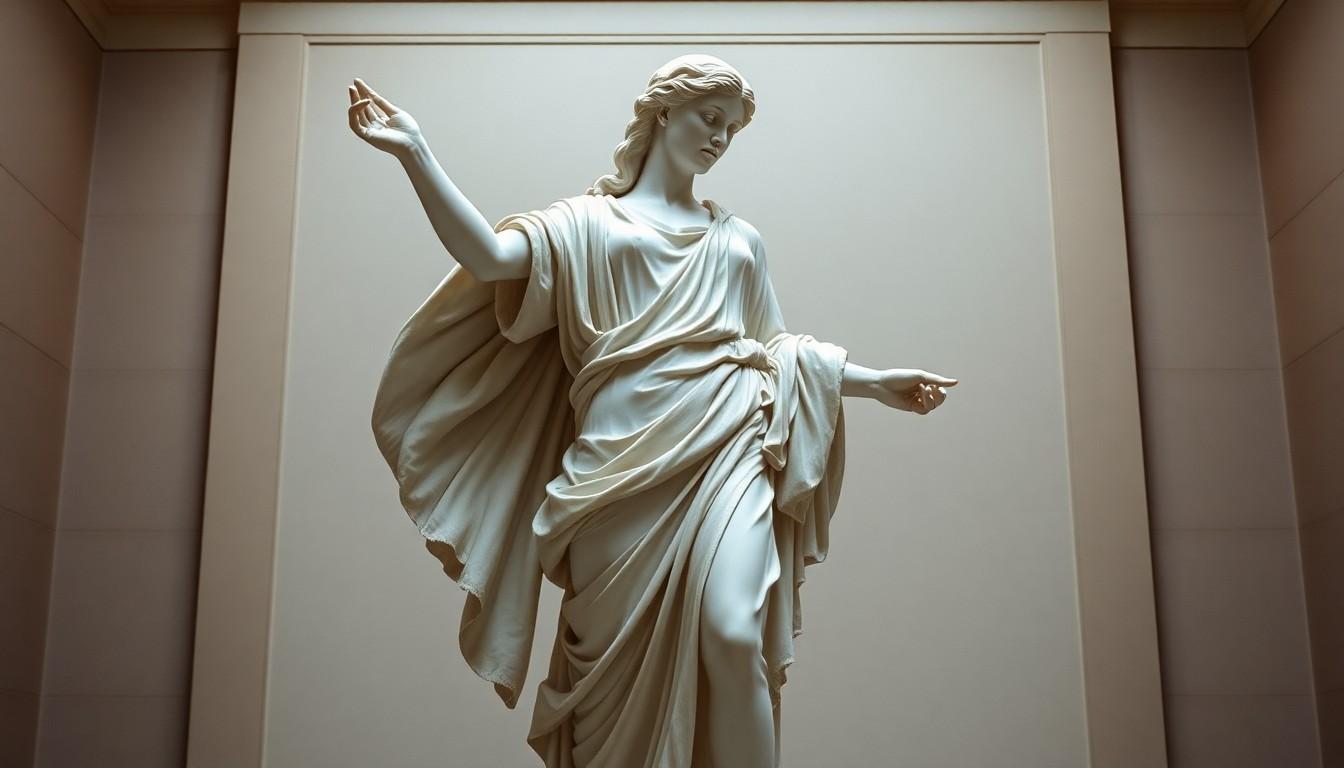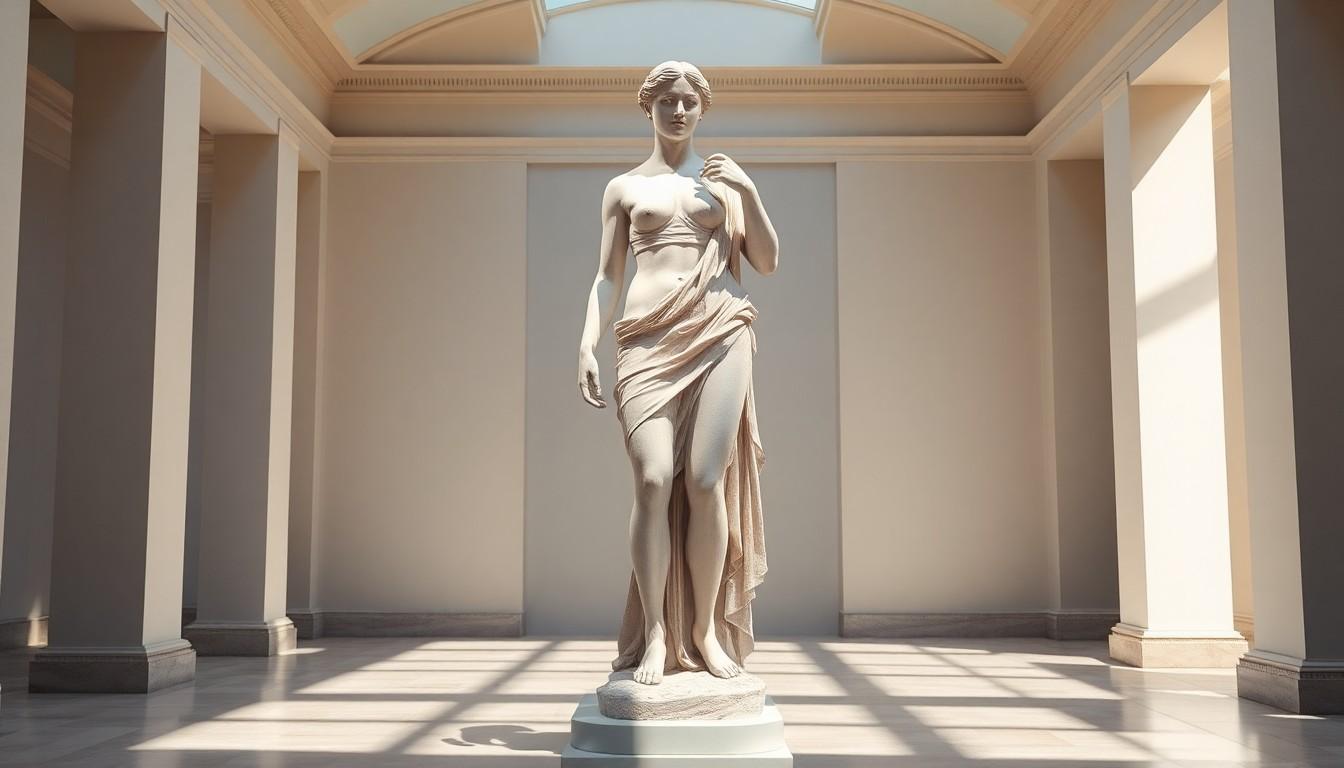Greek sculpture has a way of capturing timeless beauty, and when it comes to representations of women, it’s nothing short of mesmerizing. From the graceful curves of the Venus de Milo to the poised elegance of the Aphrodite of Knidos, these masterpieces don’t just stand still—they tell stories. Imagine a world where every statue could whisper secrets of ancient Greece, revealing the ideals of beauty, love, and femininity that still resonate today.
These sculptures reflect more than just artistic skill; they embody the spirit of an era that celebrated the human form in all its glory. Each piece invites viewers to ponder the role of women in society, art, and mythology, making them not just relics of the past but also relevant conversations for the present. So, let’s dive into the captivating world of Greek sculptures of women and discover why they still leave us in awe centuries later.
Greek Sculpture Woman
Greek sculpture represents a pinnacle of artistic achievement, reflecting cultural values and aesthetics from ancient Greece. These works often feature an idealized vision of the human figure, showcasing both beauty and motion. Female figures hold a significant place in this art form, often representing various goddesses and personifications.
Prominent sculptures like the Venus de Milo demonstrate refined craftsmanship. This piece captures the essence of femininity, drawing admiration for its balanced proportions and exquisite detail. The Aphrodite of Knidos marks another iconic representation of the female form, often regarded as one of the first fully nudes in Western art. Its naturalistic pose and flowing drapery evoke feelings of both sensuality and divinity.
Sculptors such as Phidias and Praxiteles set high standards for their contemporaries and successors. Their ability to convey emotion through stone transformed how society viewed art. Additionally, many sculptures served religious and civic purposes, acting as offerings or commemorations.
Materials and techniques used in Greek sculpture varied, including marble, bronze, and terracotta. Each medium allowed artists to experiment with textures and finishes, enriching the visual experience. The use of contrapposto, or the deliberate asymmetry of the human body, brings sculptures to life, enhancing their realism.
These enduring works of art continue to influence modern artists and captivate audiences. Through their beauty and historical significance, Greek sculptures invite an exploration of themes such as mythology, gender, and society throughout time.
Historical Context of Greek Sculpture

Greek sculpture emerged as a significant art form that evolved throughout several periods, showcasing the artistic advancements of its time. Notably, the Archaic period introduced the Kouros and Kore figures, illustrating rigid postures and stylized features. During the Classical period, sculpture became more realistic; works like the statue of Discobolus displayed naturalism and idealized beauty. The Hellenistic period saw further evolution, characterized by dynamic poses and emotional expressions, as exemplified by the Winged Victory of Samothrace. Each period built upon the last, refining techniques and deepening the representation of human form.
Evolution Through Different Periods
Archaic sculptures primarily focused on stylization and symmetry. The rigid stance of Kouros figures showcased ideal male youth. Classical sculptures, however, shifted focus to naturalism, where artists achieved more lifelike representations. An example, the statue of Athena Parthenos, exemplified the balance of beauty and proportion. Hellenistic art progressed into dramatic expressions and movement, where figures like Laocoön and His Sons captured intense emotion. This evolution marks a journey from rigid forms to dynamic expressions, reflecting changing philosophical ideas about beauty and humanity.
Influences of Culture and Society
Cultural beliefs heavily influenced Greek sculpture. Religion played a pivotal role in shaping subject matter, as many sculptures depicted gods and goddesses like Athena and Aphrodite. Social ideals related to beauty and virtue also permeated artistic expression. Gender roles in society influenced the representation of women, often idealized as embodiments of grace and fertility. Notable sculptures like the Venus de Milo symbolized feminine beauty, guiding societal perceptions of women during that era. Philosophical thought, particularly from figures such as Plato, informed artistic ideals, leading to works that sought to convey deeper meanings beyond mere aesthetics.
Notable Greek Sculpture Women
Greek sculptures prominently feature women, celebrating beauty and femininity through iconic figures. These representations convey various ideals, serving as a focal point in discussions about society and mythology.
Iconic Figures in Sculpture
The Venus de Milo represents one of the most recognizable depictions of female beauty. Its missing arms evoke curiosity and intrigue. Another notable sculpture, the Aphrodite of Knidos, pioneered the nude female form, influencing future art through its sensual representation. Sculptors like Praxiteles skillfully crafted figures that exemplified grace and emotion. The statue of the Winged Victory of Samothrace showcases a dynamic pose, enhancing the perception of movement and freedom.
Artistic Techniques Used
Ancient sculptors employed various techniques to enhance their works. Carving from marble allowed for exquisite detailing and smooth finishes. Use of bronze permitted innovation through lost-wax casting, producing vibrant textures. Artists often implemented contrapposto to create naturalistic postures in their figures. Emphasis on proportion and symmetry contributed to the harmony observed in many pieces. Experimentation with color, particularly in painted sculptures, further enriched artistic expression, making each piece visually striking and technically impressive.
Themes Represented in Greek Sculpture Women
Greek sculptures of women encapsulate profound themes, reflecting the culture and ideals of ancient society. Artists skillfully portrayed beauty and virtue through their works, embodying the female form in ways that celebrate both physical and spiritual attributes.
Beauty and Idealism
Sculptures often embody the ideals of beauty prevalent in ancient Greece. Artists emphasized harmony, symmetry, and proportion, resulting in figures that exude grace. The Venus de Milo exemplifies this, showcasing refined features and an alluring presence. Idealism in art conveyed societal standards, defining femininity as an interplay of strength and delicacy. Sculptors aimed to evoke admiration through lifelike portrayals and meticulous detail. Each piece served as an artistic representation of the perfect woman, merging aesthetics with philosophical concepts of beauty.
Social and Religious Significance
Greek sculpture often reflects the societal and religious beliefs of the time. Female figures frequently depicted goddesses, embodying virtues like love and wisdom. Aphrodite, the goddess of love, appeared regularly in artistic works, highlighting women’s roles in mythology and worship. These sculptures influenced public perception of women, linking them to ideals of virtue, fertility, and motherhood. Religious ceremonies often involved sculptures, reinforcing their significance in rituals. Each piece conveyed cultural narratives, shaping collective consciousness and informing social dynamics within ancient Greece.
Greek sculptures of women remain timeless symbols of beauty and artistry. These masterpieces not only reflect the cultural values of their time but also invite ongoing dialogue about femininity and societal roles. Each figure encapsulates a blend of emotion and craftsmanship that continues to inspire modern artists and audiences alike.
The enduring legacy of these sculptures highlights their significance in understanding ancient Greek society and its ideals. From the delicate curves of the Venus de Milo to the dynamic pose of the Winged Victory of Samothrace, each piece tells a story that transcends time. These works serve as a reminder of the profound impact that art can have on shaping perceptions of beauty and virtue throughout history.

